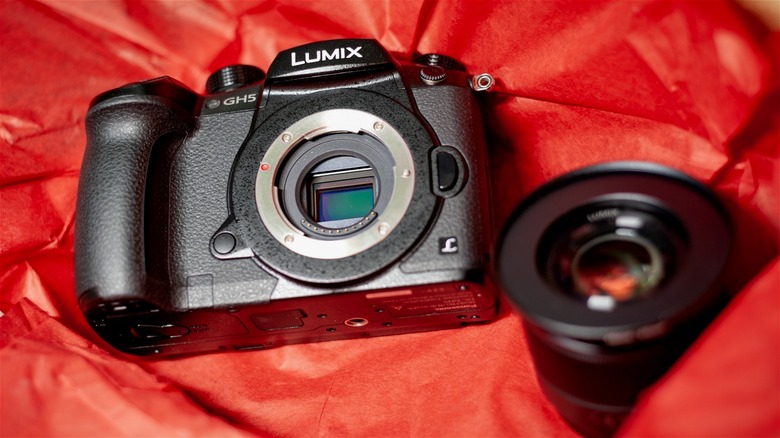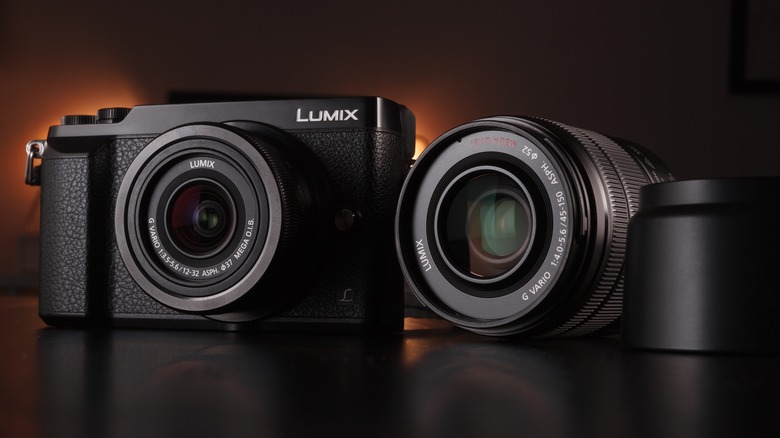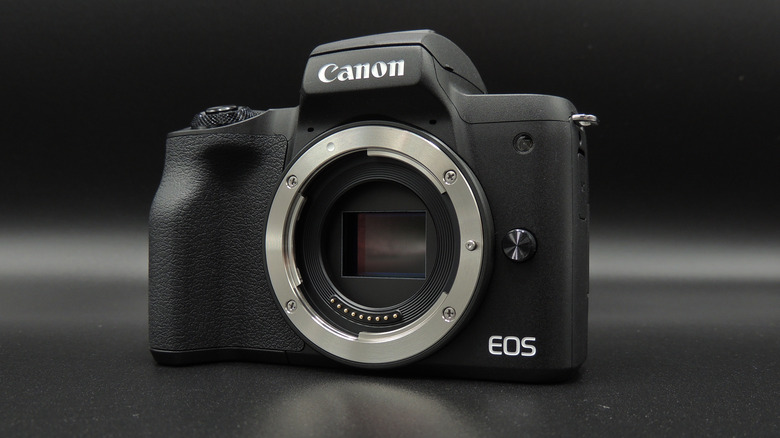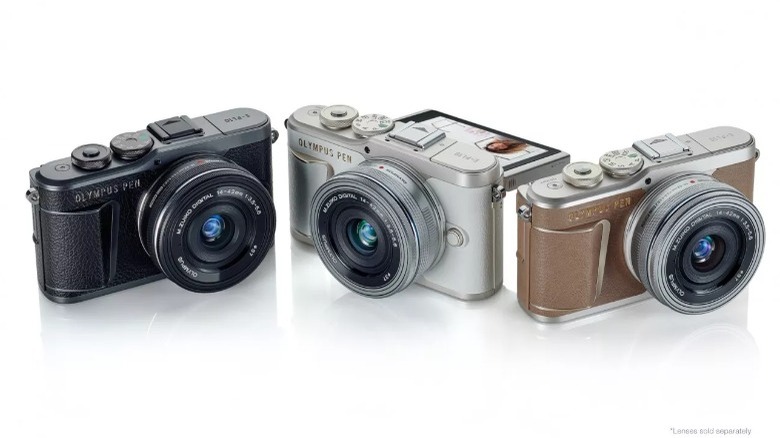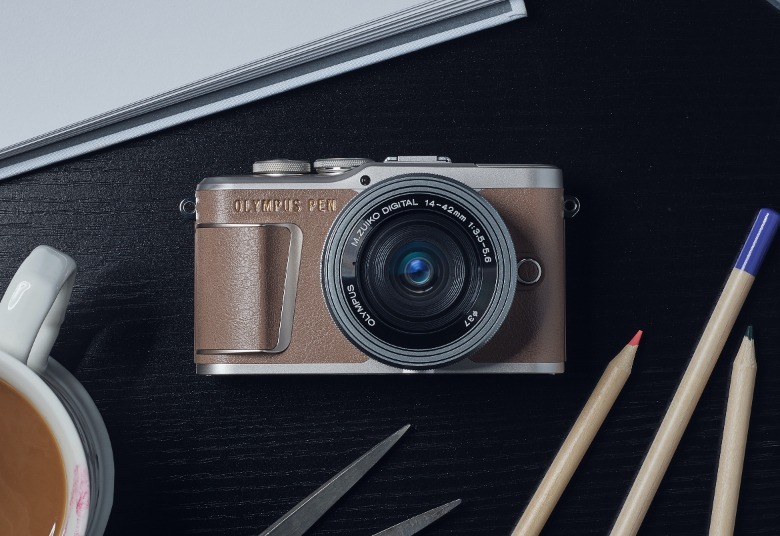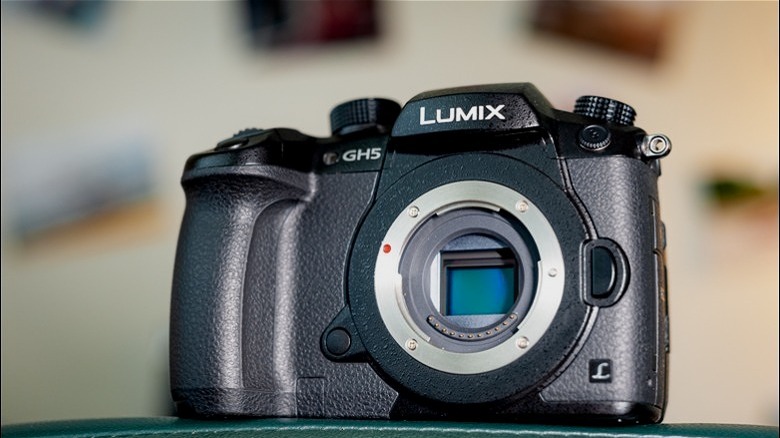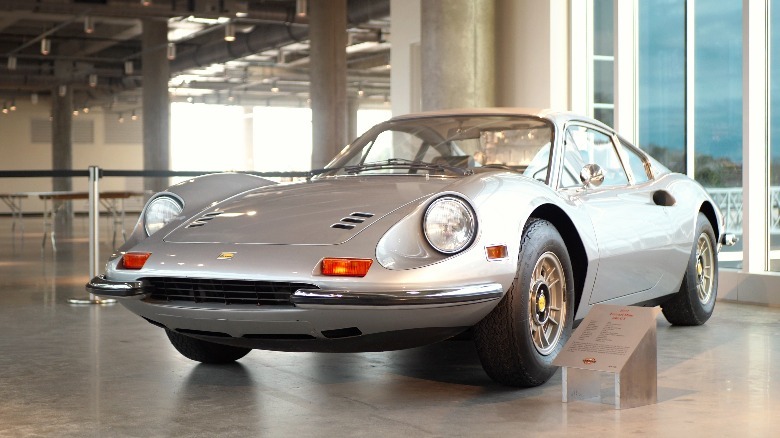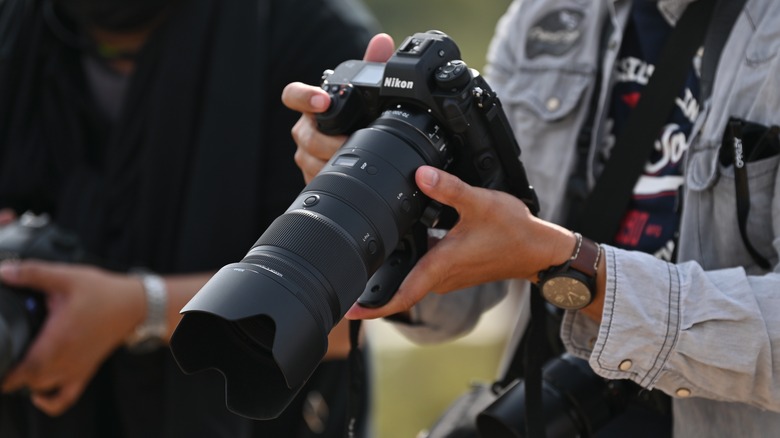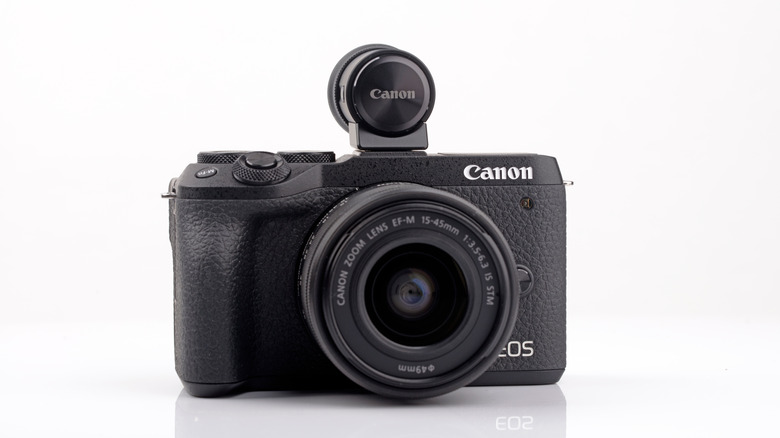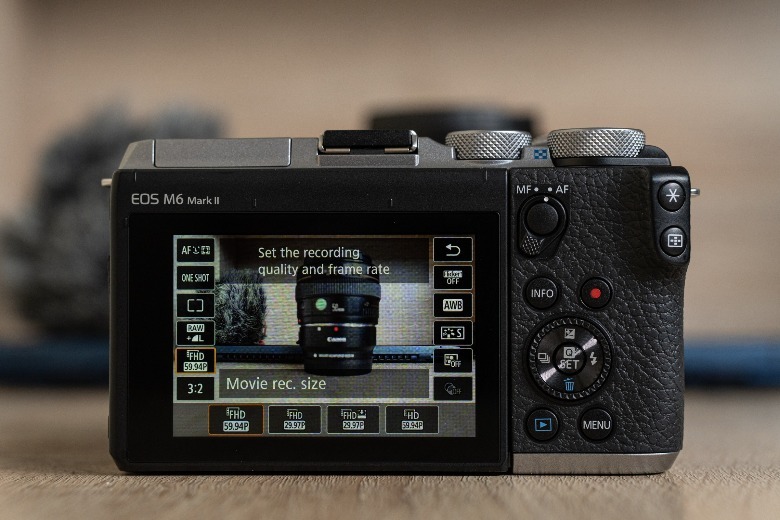Affordable Mirrorless Cameras Worth Buying In 2022
Whether you're getting into your first big camera purchase or upgrading from an old DSLR, mirrorless interchangeable-lens systems are a great option. They differ from traditional SLR cameras by getting rid of the mirror box and optical viewfinder, instead relying on an electronic viewfinder or live view screen to show the sensor's captured image to the photographer. This gives mirrorless systems an advantage when it comes to size and weight. They're usually lighter and more compact than comparable DSLRs. They also boast modern video features like 4K recording and in-body image stabilization.
With the addition of cheap adapters, mirrorless mounts can also adapt to fit vintage manual lenses dating back several decades. This adaptability gives you nearly limitless options when it comes to expanding your lens catalog and experimenting with different looks. Below, we'll highlight some of the best options to dip your toes into mirrorless photography, with selections to suit still shooters, videographers, travelers, and more. Each of these cameras features manual settings and raw photo recording, to give the user greater flexibility when it comes to image exposure and editing.
Compact Option: Panasonic Lumix GX85
The Lumix GX85 is Panasonic's current smallest offering, yet it doesn't skimp on a lot of the features found in full-size cameras. The Micro Four Thirds (MFT) sensor, half the size of a full frame, allows a compact body to fit into a five-by-three-inch footprint. The smaller sensor also allows them to stuff in five-axis active image stabilization to help eliminate camera shake in both photo and video modes. The GX85 takes 16-megapixel stills, which is plenty of adequate resolution for the average consumer.
It also shoots 4K video in 24 or 30 FPS, which is a massive boom in a body this small. In 4K mode, there is a slight crop of the image, while stepping down to 1080P allows you to record the full width of the sensor. HD recording is also possible at up to 60 FPS. There is, however, no mic jack or external monitor support. Prices remain at or under $800 including a kit lens, and buying into the MFT system allows upgrading to more pro-level cameras down the line.
A noteworthy alternative to the GX85 is the Sony A6000, which features a similarly compact design and price point. The Sony gets a larger APS-C sensor, but it loses out on that useful image stabilization. Still, the resolution is improved over the Lumix, with 24.3 megapixels to work with. HD video recording is supported up to 60 FPS, but you do not get 4K.
Semi-Pro Body: Canon M50 II
The M50 Mark II features a sleek design that should be familiar to DSLR users, with an ergonomic grip and offset electronic viewfinder. The camera also inherits an APS-C-sized sensor from many of its SLR brethren, with the ability to shoot 24.1-megapixel stills. You also get Canon's fantastic dual-pixel autofocus technology, which is among the fastest and most accurate focusing systems in the world. With facial and eye-tracking, plus continuous shooting up to 10 frames per second, catching a moving subject is almost trivial.
Video specifications are capable, but also lacking in some respects. 4K recording is possible, but it inflicts a heavy sensor crop. It's also limited to 24 FPS and must fall back on clunkier contrast detection autofocus. HD recording uses the full sensor and gives the user access to the full list of framerates up to 120P. The rear LCD screen also flips a full 180 degrees, which comes in handy for selfies and vlogging. Be aware that this body uses Canon's old EOS M mount, which will likely see diminishing support in the future compared to their new RF mirrorless line. Still, the M50 is a good value at $700 with a kit lens.
Stylish Travel Camera: Olympus E-PL10
The Olympus E-PL series unites the versatile Micro Four Thirds mount with an attractive and compact retro body. Some sacrifices are made in the name of style, the most obvious being a lack of a viewfinder. You'll have to rely on the live view screen for shooting, which does flip out underneath the camera for selfies. Stills are rendered at 16.1 megapixels, and the MFT sensor uses three axes of dynamic image stabilization. Less advanced than the five-axis system on higher-level Lumix and Olympus bodies, but still handy.
The E-PL10 is capable of shooting 4K video at both 24 and 30P with a sensor crop. HD can also go up to 60P with a full sensor readout, and 120 FPS can be achieved if you're willing to step down to 720p resolution. The flip-under screen can be problematic while trying to film yourself on a tripod, and the camera lacks microphone input, so this is really not a video production camera. Prices are in the $650 range with a 14-42mm kit lens.
If you're in the market for a cool retro body, but have some more cash to burn, consider the Fujifilm X-E4. It's similar to the Olympus but includes an electronic viewfinder, greater 26.1 MP resolution, and more video features. The X-E4 however uses Fuji's proprietary X mount, which is nowhere near as common and versatile as Micro Four Thirds.
Best Video Specs: Panasonic Lumix GH5
Although its successor, the GH6, has recently been released, the Panasonic GH5 still remains the brand's video production powerhouse. This camera is one of the best on the market when it comes to capturing professional-looking footage on a small budget, with 4K shooting up to 60P and HD slow-mo up to 180 frames per second. The full width of the sensor is recorded at all resolutions, with the option to shoot a 4:3 "open gate" and get the entire 5K sensor readout into your file. On-camera mics are supported using a 3.5mm audio jack, and the HDMI port can be used to output full-resolution video to a secondary monitor or external recorder. MFT lenses from Olympus and Panasonic can be used natively with autofocus, and all manner of manual cinema lenses can be adapted to fit. The five-axis sensor stabilization allows you to get smooth handheld shots in nearly any condition.
The GH5 also makes a competent stills camera, with 20-megapixel raw photos, and continuous burst shooting up to an impressive 12 frames per second. Just note that the contrast autofocus in this body will not be as quick or razor-sharp as those found in current Canon and Sony models. Prices start around $1,600, body only, but expect them to trend downward as we get further into GH6 production.
Budget Full Frame: Nikon Z5
The Z5 is Nikon's entry-level full-frame addition to its mirrorless platform in a DSLR-like pro body. Compared to APS-C and MFT sensors,a full frame camera gets you a wider field of view, improved low light performance, and greater background separation at wide apertures. Photos weigh in at a respectable 24.3 megapixels, with advanced eye-detection autofocus and 4.5 FPS continuous shooting. They even managed to fit five-axis stabilization inside. The body will take an Z series lens, but longtime Nikon users can also purchase an "FTZ" adapter to make their DSLR lenses fully compatible. The live view LCD screen is capable of tilting up and down but does not flip forward.
Video specs are lacking compared to its stills ability. 4K up to 30P is possible but incurs a heavy 1.7x crop. That almost defeats the purpose of shooting full frame. Full sensor video works in 1080p at up to 60 FPS. The Z5 has a jack for external mics, but it does not have an output for a monitor. If video production is a priority, you'll probably want to spring for the more expensive and feature-heavy Z6. As for the cheaper camera, bodies start at around $1,400.
If you're more into Canon, the EOS RP also offers high-res full-frame photos on a budget. Like the Nikon, it also suffers a significant crop while shooting 4K video.
High Resolution: Canon M6 II
The M6 Mark II boasts one of the highest resolution figures that can be found on an APS-C camera, and in a relatively compact body. That does, however, come with compromises. Raw photos are recorded at an impressive 32.5MP, which offers the photographer a ton of flexibility for cropping and manipulating images to fit a variety of delivery formats. You also get Canon's rock-solid autofocus with face, eye, and object tracking. The M6 lacks a built-in viewfinder, although an external one can be added on its hot shoe mount. Making up for this setback is a large LCD that takes up nearly all of the camera's back. The screen pivots, and flips up over the body for selfies. Like the M50 II, it uses the EOS M series of lenses.
The M6's video features are also useful, with uncropped 4K recording at 30P. Strangely, 24 frames per second is not supported. If that's a deal breaker, then you'll want to look to something like the GH5. HD will also shoot up 120 FPS. Mechanical sensor stabilization is not included, which will make getting some handheld shots a challenge. External microphones, monitors, and recorders are all compatible. Video output requires a micro HDMI cable. Prices are about $800 for the M6 II body, and $1,000 with a kit lens and viewfinder attachment.
